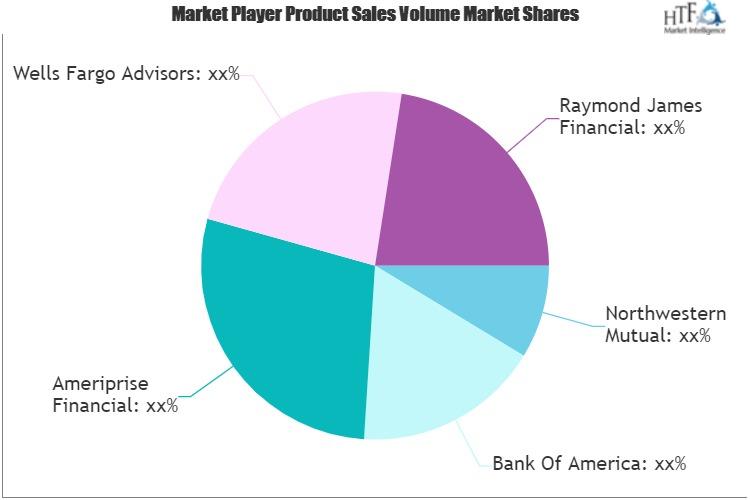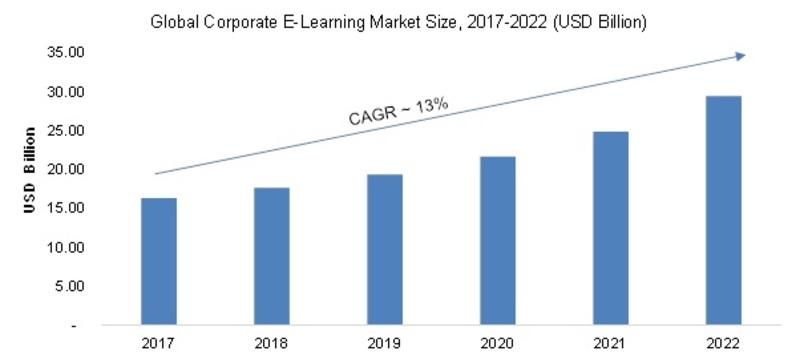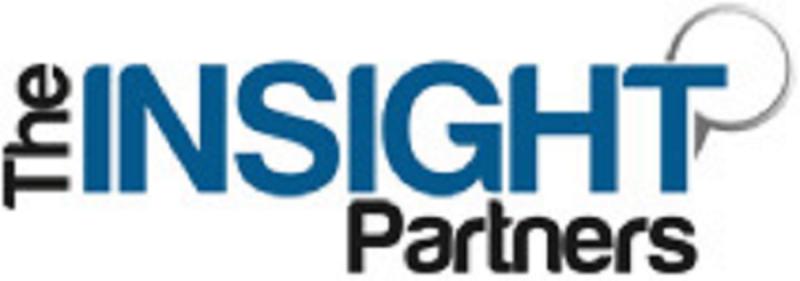Press release
Self-Tanning Products Market Size, Business Growth, Future Trends, Global Industry Share and Comprehensive Analysis by 2028
The scope of our recent study on the "Self-Tanning Products MarketForecast to 2028 - Global Analysis - by Product Type, Category, and Distribution Channel," includes factors fueling the market growth, revenue estimation and forecast, market share analysis, and the identification of significant market players, along with their key developments.
Get a PDF Sample Brochure at - https://www.theinsightpartners.com/sample/TIPRE00020568/?utm_source=OpenPR&utm_medium=10196
The self-tanning products market size is expected to grow from US$ 1,078.36 million in 2022 to US$ 1,519.59 million by 2028; it is estimated to register a CAGR of 5.9% from 2022 to 2028
Self-tanning products, also known as sunless tanners or fake tanners, give the effect of suntan without exposure to the sun. Self-tanning products are becoming increasingly popular as people are fond of bronze and tanned skin tones. Also, these products are convenient to use as they impart desired skin tone without sun exposure and sun damage. The Centers for Disease Control and Prevention (CDC) promoted the use of self-tan products by considering them a safer alternative to UV-induced tanning. According to a Popsugar Beauty article published in July 2021, 59% of college-going females in the US used self-tanners at least once and preferred using them throughout the year. These factors are driving the self-tanning products market growth.
Based on product type, the self-tanning products market is segmented into cream & lotion, serum, mist, and others. The cream & lotion segment held the largest market share in 2021. Self-tanning lotions are usually formulated with more water content compared to creams. Lotions are non-greasy, lightweight formulations that are easily absorbed by the skin. Creams are generally thicker and have rich consistency. The thicker formulation of self-tanning creams locks in moisture by creating a protective layer around the skin. Self-tanning creams and lotions provide hydration, along with artificial suntan. Customers associate creams and lotions with hydration and long-lasting tan effect. Thus, the aforementioned characteristics, convenient usage, high availability, and added functionality of self-tan creams and lotions are driving their demand across the globe.
The global self-tanning products market is segmented into five main regions-North America, Europe, Asia Pacific (APAC), Middle East & Africa (MEA), and South & Central America. In 2021, Europe held the largest market share; however, North America expected to register the highest CAGR from 2022 to 2028. The rising risk of skin cancers and other chronic skin diseases due to sun-induced tanning is compelling consumers to use fake tanners such as creams and lotions, serums, and mist. This factor is driving the demand for self-tanning products across Europe. Moreover, increasing celebrity influence on young consumers is also expected to boost the sales of self-tanning products, thereby driving the market growth.
Buy Now at - https://www.theinsightpartners.com/buy/TIPRE00020568/?utm_source=OpenPR&utm_medium=10196
In 2021, governments of various countries announced relaxations in previously imposed restrictions and permitted manufacturers to work at full capacities. Thus, increased production volumes and improved supply chain operations bolstered the self-tanning products market growth.
The report includes the segmentation of the global self-tanning products market as follows:
The global self-tanning products market is segmented into product type, category, distribution channel, and geography. Based on product type, the market is segmented into cream & lotion, serum, mist, and others. Based on category, the self-tanning products market is bifurcated into natural & organic and conventional. Based on distribution channel, the market is segmented into supermarkets & hypermarkets, convenience stores, online retail, and others. By geography, the global self-tanning products market is broadly segmented into North America, Europe, Asia Pacific, the Middle East & Africa, and South & Central America.
Global Self-Tanning Products Market: Competitive Landscape
A few players operating in the global self-tanning products market include Bondi Sands Pty Ltd, KAO Corp, PZ Cussons Plc, Supernova UK Pty Ltd, Epic Etailers LLC, Loreal SA, HotHouse Beauty Ltd, Johnson & Johnson, Coty Inc, and Edgewell Personal Care Co. Players operating in the self-tanning products market are focusing on providing high-quality products to fulfill customer demand. For instance, manufacturers are investing in micro-mist technology that involves the use of technology for the atomization of fluids to very fine particle sizes. It helps to create a more flawless spray and requires less solution to cover an entire body. Similarly, Rapid or One-Hour Tanning Formulas technology is also gaining popularity among consumers. This technology allows the client to shower within one to three hours of application versus the traditional eight hours with increasing the level of the active ingredient. Such product launches and technological developments are driving the self-tanning products market growth.
Browse More About This Research Report at: https://www.theinsightpartners.com/reports/self-tanning-products-market/
Contact Us:
If you have any queries about this report or if you would like further information, please contact us:
Contact Person: Ankit Mathur
E-mail: sales@theinsightpartners.com
Phone: +1-646-491-9876
About Us:
The Insight Partners is a one stop industry research provider of actionable intelligence. We help our clients in getting solutions to their research requirements through our syndicated and consulting research services. We specialize in industries such as Semiconductor and Electronics, Aerospace and Defense, Automotive and Transportation, Biotechnology, Healthcare IT, Manufacturing and Construction, Medical Device, Technology, Media and Telecommunications, Chemicals and Materials.
Get a PDF Sample Brochure at - https://www.theinsightpartners.com/sample/TIPRE00020568/?utm_source=OpenPR&utm_medium=10196
The self-tanning products market size is expected to grow from US$ 1,078.36 million in 2022 to US$ 1,519.59 million by 2028; it is estimated to register a CAGR of 5.9% from 2022 to 2028
Self-tanning products, also known as sunless tanners or fake tanners, give the effect of suntan without exposure to the sun. Self-tanning products are becoming increasingly popular as people are fond of bronze and tanned skin tones. Also, these products are convenient to use as they impart desired skin tone without sun exposure and sun damage. The Centers for Disease Control and Prevention (CDC) promoted the use of self-tan products by considering them a safer alternative to UV-induced tanning. According to a Popsugar Beauty article published in July 2021, 59% of college-going females in the US used self-tanners at least once and preferred using them throughout the year. These factors are driving the self-tanning products market growth.
Based on product type, the self-tanning products market is segmented into cream & lotion, serum, mist, and others. The cream & lotion segment held the largest market share in 2021. Self-tanning lotions are usually formulated with more water content compared to creams. Lotions are non-greasy, lightweight formulations that are easily absorbed by the skin. Creams are generally thicker and have rich consistency. The thicker formulation of self-tanning creams locks in moisture by creating a protective layer around the skin. Self-tanning creams and lotions provide hydration, along with artificial suntan. Customers associate creams and lotions with hydration and long-lasting tan effect. Thus, the aforementioned characteristics, convenient usage, high availability, and added functionality of self-tan creams and lotions are driving their demand across the globe.
The global self-tanning products market is segmented into five main regions-North America, Europe, Asia Pacific (APAC), Middle East & Africa (MEA), and South & Central America. In 2021, Europe held the largest market share; however, North America expected to register the highest CAGR from 2022 to 2028. The rising risk of skin cancers and other chronic skin diseases due to sun-induced tanning is compelling consumers to use fake tanners such as creams and lotions, serums, and mist. This factor is driving the demand for self-tanning products across Europe. Moreover, increasing celebrity influence on young consumers is also expected to boost the sales of self-tanning products, thereby driving the market growth.
Buy Now at - https://www.theinsightpartners.com/buy/TIPRE00020568/?utm_source=OpenPR&utm_medium=10196
In 2021, governments of various countries announced relaxations in previously imposed restrictions and permitted manufacturers to work at full capacities. Thus, increased production volumes and improved supply chain operations bolstered the self-tanning products market growth.
The report includes the segmentation of the global self-tanning products market as follows:
The global self-tanning products market is segmented into product type, category, distribution channel, and geography. Based on product type, the market is segmented into cream & lotion, serum, mist, and others. Based on category, the self-tanning products market is bifurcated into natural & organic and conventional. Based on distribution channel, the market is segmented into supermarkets & hypermarkets, convenience stores, online retail, and others. By geography, the global self-tanning products market is broadly segmented into North America, Europe, Asia Pacific, the Middle East & Africa, and South & Central America.
Global Self-Tanning Products Market: Competitive Landscape
A few players operating in the global self-tanning products market include Bondi Sands Pty Ltd, KAO Corp, PZ Cussons Plc, Supernova UK Pty Ltd, Epic Etailers LLC, Loreal SA, HotHouse Beauty Ltd, Johnson & Johnson, Coty Inc, and Edgewell Personal Care Co. Players operating in the self-tanning products market are focusing on providing high-quality products to fulfill customer demand. For instance, manufacturers are investing in micro-mist technology that involves the use of technology for the atomization of fluids to very fine particle sizes. It helps to create a more flawless spray and requires less solution to cover an entire body. Similarly, Rapid or One-Hour Tanning Formulas technology is also gaining popularity among consumers. This technology allows the client to shower within one to three hours of application versus the traditional eight hours with increasing the level of the active ingredient. Such product launches and technological developments are driving the self-tanning products market growth.
Browse More About This Research Report at: https://www.theinsightpartners.com/reports/self-tanning-products-market/
Contact Us:
If you have any queries about this report or if you would like further information, please contact us:
Contact Person: Ankit Mathur
E-mail: sales@theinsightpartners.com
Phone: +1-646-491-9876
About Us:
The Insight Partners is a one stop industry research provider of actionable intelligence. We help our clients in getting solutions to their research requirements through our syndicated and consulting research services. We specialize in industries such as Semiconductor and Electronics, Aerospace and Defense, Automotive and Transportation, Biotechnology, Healthcare IT, Manufacturing and Construction, Medical Device, Technology, Media and Telecommunications, Chemicals and Materials.
Permanent link to this press release:
Copy
Please set a link in the press area of your homepage
to this press release on woodPRI. woodPRI disclaims liability for any content contained in
this release.
Recommend

/newsMicroencapsulation Market Deep Analysis on Key Players - Dow Corning, Encapsys, Syngenta Crop Protection, Evonik Industries, 3M and Bayer
Market Study Report Adds Global Microencapsulation Market Size, Status and Forecast 2024 added to its database. The report provides key statistics on the current state of the industry and other analytical data to understand the market.
Extensive research is required for choosing the appropriate cor...

/newsGermany Airbag Market Size 2023: Global Share, Industry And Report Analysis By 2030 | Hyundai Mobis Co., Ltd. Key Safety Systems, Inc. Robert Bosch GmbH
Germany airbag market is expected to grow at a CAGR of around 6% during the forecast period. Germany Airbag Market research report refers to gathering and analyzing significant market data serve as best medium for various industry players to launch novel product or service. It is vital for key firms...

/newsSecurities Brokerages And Stock Exchanges Market Outlook 2021: Big Things are Happening
A new intelligence report released by HTF MI with title "Global Securities Brokerages And Stock Exchanges Market Survey & Outlook" is designed covering micro level of analysis by Insurers and key business segments, offerings and sales channels. The Global Securities Brokerages And Stock Exchange...

/newsRenewable Chemicals Market Emerging Trends and Competitive Landscape Forecast to 2028
The renewable chemicals market was valued at US$ 80,566.30 million in 2021 and is projected to reach US$ 1,76,750.76 million by 2028 it is expected to grow at a CAGR of 11.9% from 2021 to 2028. The research report focuses on the current market trends, opportunities, future potential of the market, a...

/newsHow Coronavirus is Impacting Cold Brew Coffee, Global Market Volume Analysis, Size, Share and Key Trends 2020-2026
"Market Latest Research Report 2020:
Los Angles United States, February 2020: The Cold Brew Coffee market has been garnering remarkable momentum in the recent years. The steadily escalating demand due to improving purchasing power is projected to bode well for the global market. QY Research's lates...

/newsCorporate E-Learning Market - Global Industry Size, Share, Key Players Analysis that are Infor, SkillSoft Corporation, Adrenna, CERTPOINT Systems and others with Regional Forecast to 2022
Overview:
E-Learning is used to enhance the learning procedures for newer job requirements and to make employees sound about the internal and external changes in the market and respective organizations. This method has created considerable differences in the ways of training and developing employee...
